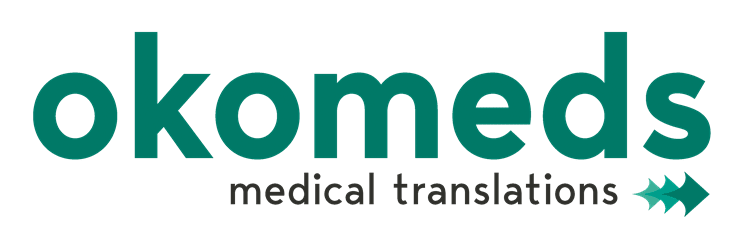
06 Dec Medicine translation, cracking the anticoagulants code
Medical appointments can be confusing, cultural barriers can favor misunderstandings, so having a team of medical translators, interpreters or specifically trained staff can make a big difference on patients’ health. For example, when referring to anticoagulants, do we really know what they are?
Becoming anticoagulants meaning experts
Anticoagulants are substances usually known as blood thinners, that is, substances used to prevent the formation of blood clots. Some of them exist in nature and are secreted by mosquitoes, leeches or other blood eating animals. This chemical substances are also used in medical treatment to prevent deep venous thrombosis, pulmonary embolism, stent thrombosis, blood clots within venous and arterial catheters or blood clots during atrial fibrillation treatment. They are commonly used too in case of heart attacks or strokes.
It is important to use the precise word for a medical term in any language, as well as the — and the best way to convey uncomfortable information to people from different origins. Translating medical documents accurately requires, not only a native or near-native, but also analytical capabilities and even cultural knowledge in both the source and target languages.
As there are different classes of anticoagulants, as Factor Xa inhibitors, Vitamin K antagonists, Direct thrombin inhibitors and low molecular weight heparins; there are real indicators of proficiency in translation, such as knowledge of relevant terminology, ability to discern meaning in context, knowledge of the subject matter and adopt the target language constraints.
It is important to use the precise word for a medical term in any language
What about antiplatelets translation?
Although antiplatelets seem similar to anticoagulants, they work differently.
– Antiplatelets, as aspirin, inhibit the ability of platelets to participate in the clotting process.
– Anticoagulants, as sintrom, prevent blood coagulation by reducing the action of clotting factors.
Slight difference like this, that can mean a lot in some cases is one of the reasons why machine translation services can be useful to gain general understanding of a text, however, in medicine, one must go further, and any official or publishable document must be adequately translated by professionals.
The name simtrom, like in the case of aspirin, corresponds to the trademark, and with time, has popularly become the name of the product. With it people usually refer to all types of oral anticoagulants, because they are really talking about acenocoumarol, one of the most used anticoagulants. Another, with similar effects is warfina.
To avoid Making arbitrary changes to a translated document that might reverse any quality control mechanisms, reviewing any translation should also be a carefully monitored process, especially when the person reviewing a translated document is not a professional linguist. It is always better to ask the translator or the Medical Translation Services Agency.

How anticoagulants function helps the patient’s health
Anticoagulants generate lower coagulation intensity, making blood more liquid. Therefore they can be used to avoid the formation of a thrombosis or an embolism. They help to prevent the formation of clots in the blood vessels, thus reducing this risk in people with greater tendency to suffer from them due to their disease. Anticoagulants can be prescribed to people with different cardiovascular complications. Doses must be adjusted to each patient and his or her coagulation evolution shall be regularly controlled through blood tests.
However, any step to improve our cardiovascular health should be taken, and here a healthy diet including fruits, vegetables, fiber and green tea and a healthy lifestyle, including moderate exercise can affect any patient’s physical well-being, or even influence his/her cognitive abilities.
To become familiar with accepted standards for translation and the medical industry, may clarify a lot of issues too. Sometimes, additional guidelines are created to enhance the translation and the quality management processes. Just like the medical profession, translation is a profession that must be taken seriously, and which requires formal education and specific skills.






Sorry, the comment form is closed at this time.